Mainz, Ships
Mogontiacum: Roman city, capital of Germania Superior, important military base, modern Mainz.
Mainz Ships
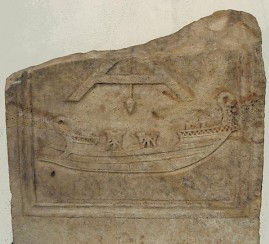
Mainz was an important naval base of the Roman fleet on the river Rhine. The first-century relief from Mainz-Weisenau shown to the right, is the lower part of the tombstone of a carpenter from the Museum für antike Schifffahrt. It shows how a warship is built. It has a ram and a high afterdeck, not unlike the ships that are shown on the Column of Trajan in Rome. Two catapults are also indicated.
One wonders why these ships were ever needed on the Rhine, because in the first century, the Chatti on the opposite bank of the river did not build ships - so why should the Romans employ ramming ships?
Mainz-3 (Nachbau 2)
The two most splendid objects in the Museum für antike Schifffahrt are the reconstructions of warships that were excavated in 1981/1982 east of the ancient walls of Mogontiacum in what must have been the Roman river port. All in all, there were six wrecks; two of them could be reconstructed. Below, you see the reconstruction ("Nachbau 2") of the ship known as Mainz-3, which was built towards the end of the third century CE, and must have played a role in the Alamannic war of Constantius Chlorus (in 292).
 Remains of the Mainz-3 ship |
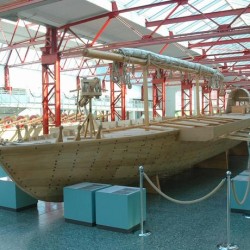 Reconstruction of the Mainz 3 warship |
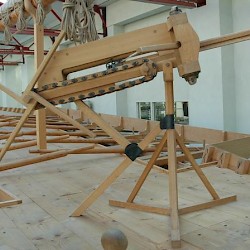 Reconstruction of the Mainz 3 warship: catapult |
 Reconstruction of the Mainz 3 warship: afterdeck |
The Mainz-3 was remarkable for its width (about 1:5), which allowed to twice seven rowers. It may have served for patrols, although it may also have been used to transport food supplies and weapons. The catapult is very interesting because it has a mechanism to add new new arrows to the barrell automatically. It's the ancient equivalent of rapid fire. Its practical use can only have been limited, but it must have impressed the Alamans.
Mainz-1 (Nachbau 1)
The Mainz-1 ("Nachbau 1") was built out of wood that was cut in 376 CE, but the ship was later repaired, with wood from trees that were felled in 385 and in 394. This is confirmed by a bronze coin of Theodosius I, minted after 388, that was placed as an offering between the hull and one of the frames.
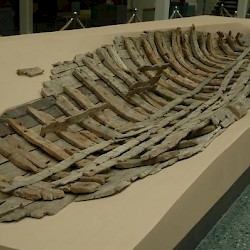 Remains of the Mainz 1 ship |
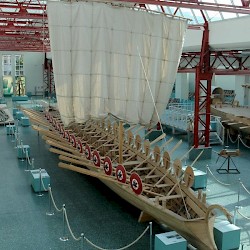 Reconstruction of the Mainz 1 galley |
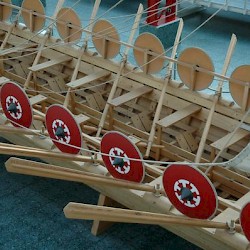 Reconstruction of the Mainz 1 galley |
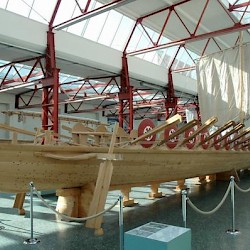 Reconstruction of the Mainz 1 galley |
The Mainz-1 belongs to a class of ships that is commonly known as Mainz-A, after this vessel, which was the first of this type that was found by archaeologists. The Mainz-5 is also a Mainz-A vessel: a narrow galley with many rowers (protected by shields) and a strong stern to ram other ships. It may have been used to attack the small vessels used by the Alamans, but must also have served as a carrier to transport troops across the river or to threatened positions. If the winds were favorable, the sail could be used.
Mainz-2, 4, 5, 6
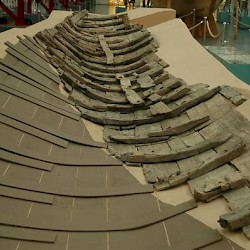 Remains of the Mainz 2 |
 Remains of the Mainz-4 |
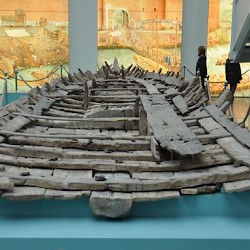 Remains of the Mainz-5 |
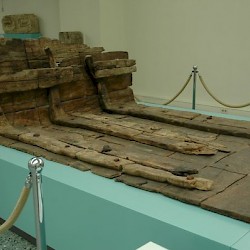 Remains of the Mainz-6 |